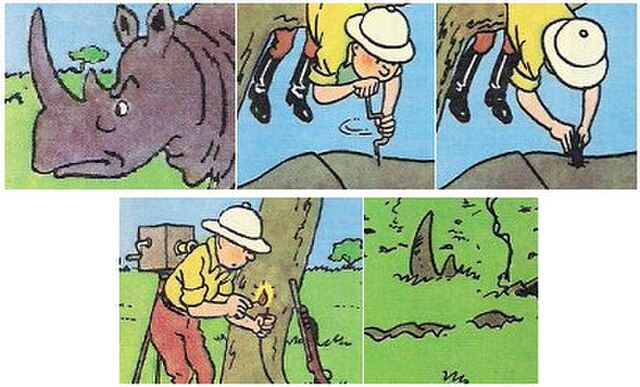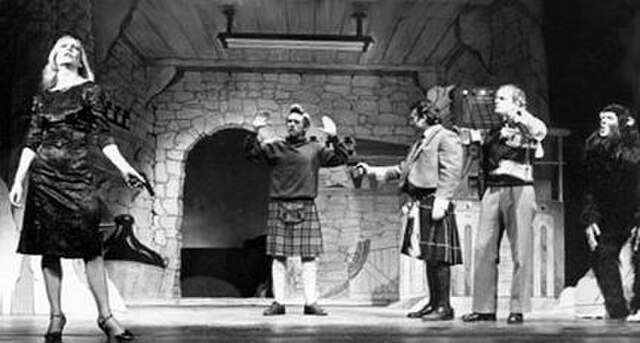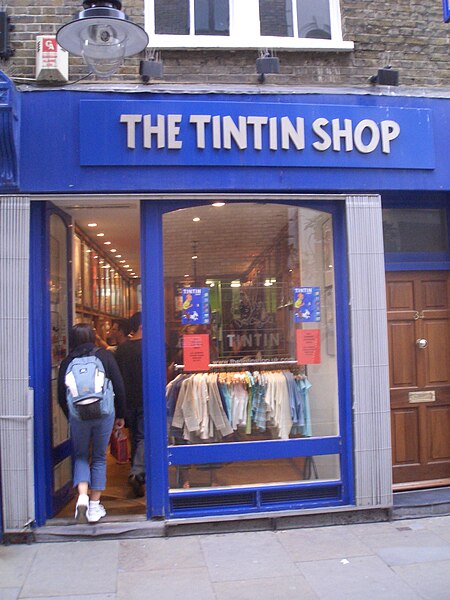Borduria is a fictional country in The Adventures of Tintin, the comics series by Belgian cartoonist Hergé. It is located in the Balkans and has a rivalry with the fictional neighbouring country of Syldavia. Borduria is depicted in King Ottokar's Sceptre (1938–1939) and The Calculus Affair (1954–1956), and is referred to in Tintin and the Picaros (1975–1976). Another international rival is Khemed.
The Nazi German Heinkel He 118 used by Hergé to draw his airplane in 1939. The Swastika was replaced by another geometrical form.
The Adventures of Tintin is a series of 24 comic albums created by Belgian cartoonist Georges Remi, who wrote under the pen name Hergé. The series was one of the most popular European comics of the 20th century. By 2007, a century after Hergé's birth in 1907, Tintin had been published in more than 70 languages with sales of more than 200 million copies, and had been adapted for radio, television, theatre, and film.
The early Adventures of Tintin naïvely depicted controversial images, which Hergé later described as "a transgression of my youth". In 1975, he substituted this sequence with one in which the rhino accidentally discharges Tintin's rifle.
Tintin and the Black Island at the Arts Theatre in the West End of London, by the Unicorn Theatre Company, in 1980–81
The Tintin Shop in Covent Garden, London
Belgian Post's series of postage stamps "Tintin on screen" issued 30 August 2011 featuring a chronological review of Tintin film adaptations made through years.





